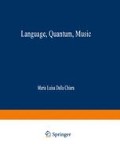Abstract
The discovery to which the historian of mathematics Eric Temple Bell refers consisted in observing that the three fundamental kinds of consonances, the octave (for instance, the interval C-c),the fifth (as the interval C-G) and the fourth (as the interval C-F) were obtained by plunking two sections of a string whose lengths were in the ratio of 2 to 1 for the octave, of 3 to 2 for the fifth and of 4 to 3 for the fourth. So, the three most natural consonances could be expressed by means of the numbers 1, 2, 3 and 4 (the numbers which form the tetraktys of the decad!), and the following figure (in which 6, 8, 9, 12 are the smallest numbers producing these ratios) became the manifesto of the Greek music theory. (We observe that, if we set the numbers in incresing order and we consider them as representing the lenghts of the strings, then the pitches of the corresponding notes are decreasing. And actually the Greek scales were descending.)
If one landmark overtops all others in the evolution of science, it is the discovery by Pythagoras of the connection between musical harmonies and numbers.
Access this chapter
Tax calculation will be finalised at checkout
Purchases are for personal use only
Preview
Unable to display preview. Download preview PDF.
References
Barbera André: 1991, The Euclidean Division of the Canon. University of Nebraska Press.
Barker Andrew: 1989, Greek Musical Writings. II. Cambridge University Press.
Bellissima Fabio: 1995, A Problem of Fermat Relative to the Decomposition of Epimoric Fractions. Rapporto Matematico dellUniversitâ di Siena.
Boethius: 1867, De Istitutione Arithmetica. Teubner.
Boethius: 1867, De Institutione Musica. Teubner.
Bryennius Manuel: Harmonics,in [14].
Euclid, Sectio Canonis: text [9], text and and Latin translation in Heiberg-Menge, Euclidis opera omniaVlll,Lipsiae 1916; English translation in [1] and [2], Italian translation [15].
Fermat Pierre: Notes Critiques sur les Harmoniques de Manuel Bryenne, in Ouvres de Fermat,Appendice.
Jan Carl von; 1895, Musici scriptores graeci. Leipzig.
Nicomachus, Enchiridion,in [9], English translation in [2], Italian translation in [15].
Porphyry, Commentary on Ptolemy’s Harmonics,in [14].
Ptolemy, Harmonics,in [14], English translation in [2].
Tannery Paul: Du Röle de la Musique Grecque dans le Développment de la Mathématique Pure, Bibliotheca Mathematica, 3. Folge, t. III, 1902, 161-175 (also in Mémories Scientifiques de Paul Tannery, III, 68 - 89 ).
Wallis John: 1972, Opera Mathematica, III. Georg Olms Verlag.
Zanoncelli Luisa: 1990, La Manualistica Musicale Greca. Guerini Studio.
Author information
Authors and Affiliations
Editor information
Editors and Affiliations
Rights and permissions
Copyright information
© 1999 Springer Science+Business Media Dordrecht
About this chapter
Cite this chapter
Bellissima, F. (1999). Epimoric Ratios and Greek Musical Theory. In: Chiara, M.L.D., Giuntini, R., Laudisa, F. (eds) Language, Quantum, Music. Synthese Library, vol 281. Springer, Dordrecht. https://doi.org/10.1007/978-94-017-2043-4_28
Download citation
DOI: https://doi.org/10.1007/978-94-017-2043-4_28
Publisher Name: Springer, Dordrecht
Print ISBN: 978-90-481-5229-2
Online ISBN: 978-94-017-2043-4
eBook Packages: Springer Book Archive

